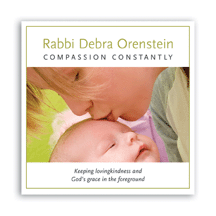Are “Two Kinds” Too Kind, Too Cruel, or Just Too Many?
by Rabbi Debra Orenstein
Rabbi Ed Feinstein, a gifted colleague and friend, once said from the bimah: “There are two kinds of people in the world. Those who think there are two kinds of people, and everybody else.” It’s a hilarious and profound comment on duality – and the way we divide ourselves.
There are many ways to “divide out” Jewish affinities and affiliations. Whether you are a “Purim person” or not is certainly one of them. That fault line cracks open every year around this time. Some people love the noise, the chaos, the carnival, the dress up, even the liquor. I have also heard Purim described as “distasteful” and “migraine-inducing.” Adults deliberately misbehave and encourage children to attend.
A more profound dualism associated with Purim is found in the text itself. The Book of Esther is full of doublings and reversals: the gallows Haman intended for Mordecai becomes his own; the honor he intends for himself becomes Mordecai’s; Esther the hidden becomes Esther the heroine; the beauty queen bests the King’s most respected advisor; the day of the Jewish people’s doom becomes the day of their jubilation. The world of the Megillah is dualistic, and fate is binary; it will be one way or the other.
The theme of two (divinely reversible) destinies is continued in our customs: men dress up as women; students impersonate and roast teachers; we “eat” the ears (hamantaschen) of the one who tried to consume and destroy us.
Yet the merriment of Purim, even at its most wild, is about not knowing a divide. When you can’t tell the difference between “cursed be Haman” and “blessed be Mordecai,” when you notice that the gematria (numerological equivalent) of those two phrases is exactly the same, then you begin to understand …
The Hebrew phrase “ad shelo yada” is usually translated “until you don’t know [the difference between Haman and Mordecai].” The great Reb Zalman Schachter-Shalomi extracts the word “lo” (no) and takes it as the main object of the sentence: “ad shelo yada” – until you know the “no.” Once you know the place and disposition of “no difference,” that’s when you really know Purim. And if you don’t know the “no,” then you simply don’t know.
There is a plane (Reb Zalman would say it’s in the world of Atzilut, associated with Spirit and the ineffable – the “highest” of Kabbalah’s four worlds) on which there truly is no difference between Haman and Mordecai. On this plane, we can see, at least, that each is indispensible and doing his best.
We spend so much energy in Jewish life dividing between kosher and treif, good and evil, pure and impure. Beneath the surface of our most dualistic holiday, where the villains are booed and the heroes are lauded, is a reminder: the ultimate perspective is “echad - One.” When we act out of our own free will, we are also, simultaneously, playing our part in the predestined drama of God.
So here’s a toast to the Haman of the Book of Esther and all the Hamans and Amalekites of Jewish history and our lives. Had you not been the full Haman, we might never have become the Mordecais and Esthers we were meant to be. L’chaim.
L’chaim brings us right back to dualism. Because “life” in Hebrew is a plural noun. We can’t live life in the echad, anymore than we can dwell in Atzilut. But we can glimpse and visit and remember. And get deliberately confused (with the help of mayhem and alcohol and humor).
When you don’t know if you know the “no,” then know: now you’re getting close.
On the CD Compassion Constantly Rabbi Debra answers a question about how we can transcend the good vs. evil dualistic model in a world where there are real perpetrators and real victims. Here is track #4 from the CD:
The track and the whole album can also be downloaded from iTunes.


